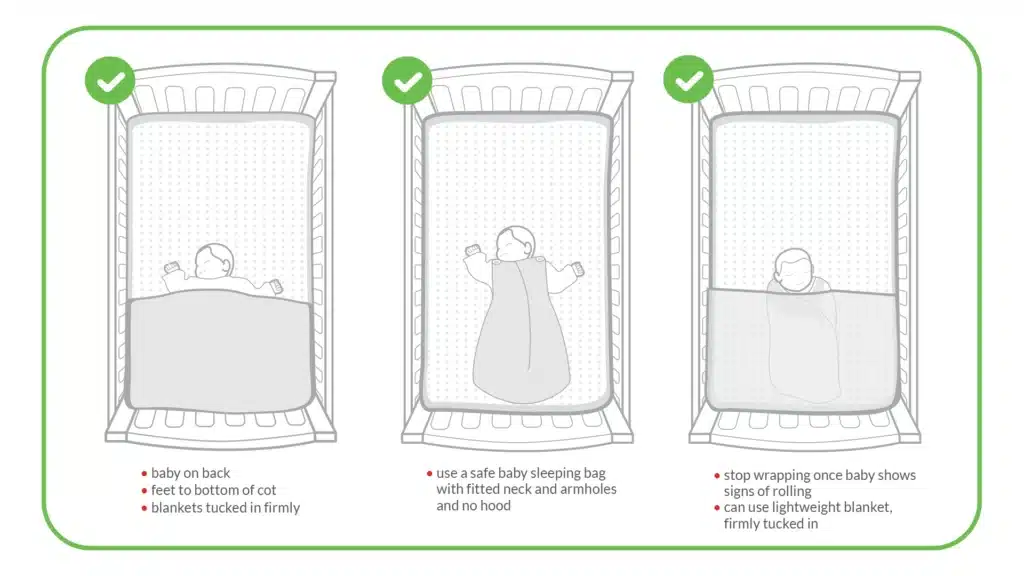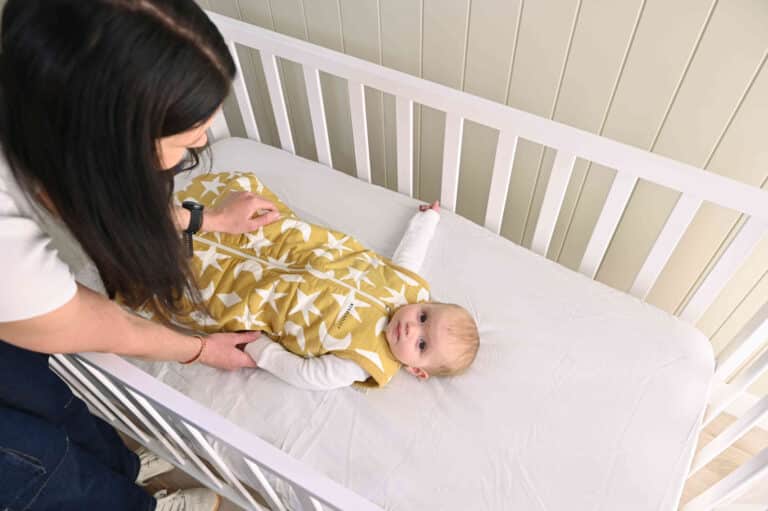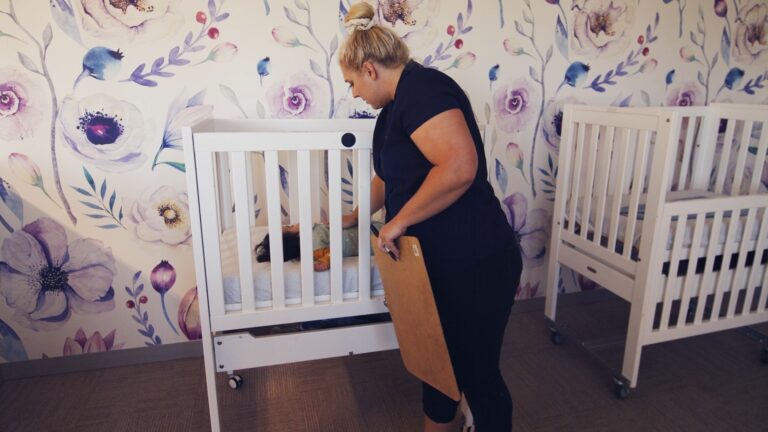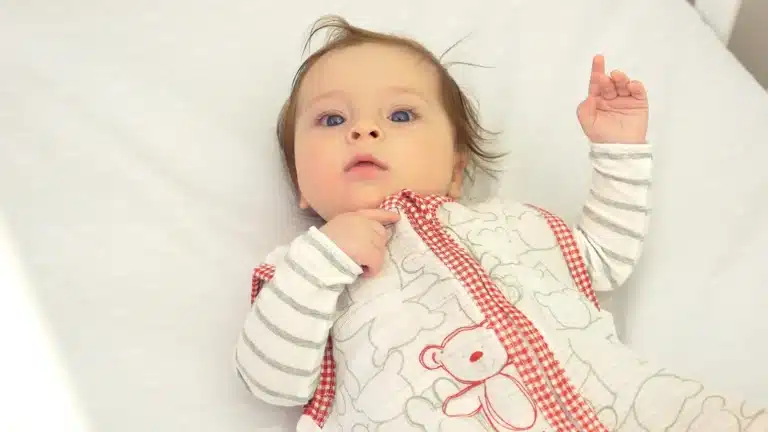Overheating is one of the major risk factors for SIDS and SUDI. Do you know how much or what sort of bedding to use to keep baby warm and safe while sleeping?
How much bedding should be used for a baby?
- Dress baby and use layers as you do for yourself, neither too hot nor too cold.
- Sleep baby with feet at the bottom of the cot, tuck their blankets in firmly on 3 sides and make sure the blanket only reaches baby’s chest. This reduces the chance of baby moving under bedding.
- Heavy bedding or baby’s head becoming covered by blankets increases risk.
- Consider using a safe baby sleeping bag.
- To check if you baby is too hot or cold, feel their tummy or back. Hands, ears, cheeks, noses can be cold to the touch but their tummy (or core temperature) is nice and warm.
- Remove hats, bonnets, beanies and hooded clothing from baby’s head as soon as baby is indoors.

Overheating
If your baby becomes too hot, the risk of SUDI increases. Overheating can be caused by room heating, high body temperature, excessive clothing or bedding and head coverings.
To reduce the risk of this, think about:
- where you live
- The climate, is it summer or winter?
- what heating or cooling you have in your home
- If your baby has a cold or minor illness (which may cause their temperature to rise).
A useful guide is to dress baby as you would dress yourself. If you are comfortable, neither too hot nor too cold then dress baby the same way.
If baby has a minor illness and has a temperature it is common to overdress baby for sleep to keep them warm. In fact, fewer or no bedclothes should be used. If you are worried that baby is unwell, please take your child to a doctor or the local hospital.
Babies control their internal or core temperature by releasing excess heat through the head and face. It is really important to not use hats for sleeping as these can increase the risk of overheating and SUDI.
Sleeping your child on their back will also help them to control their internal temperature. When they sleep on their front their risk of overheating is increased, especially if heavy bedding is being used. Increased temperature can cause baby to breath more rapidly, increase their heart rate and may cause apnoea, or pauses in breathing. It can also reduce your baby’s ability to wake themselves from sleep.
My baby has a cold, what do I do?
If your baby becomes too hot, the risk of SUDI increases. Overheating Babies with a common cold are often given more bedding than they need due to caregiver concerns that babies need to be kept warm. In fact, it’s more important to help these babies effectively regulate their temperature.
The best way to do this is to:
- place them on their back to sleep
- Keep their head uncovered
- remove some bedding or clothing.
If baby is overly warm to touch, or showing signs of heat stress (irritability, looking unwell, floppy, drier skin, refusing to drink or having fewer wet nappies than usual) then see your doctor or health professional immediately.
Can we say exactly how many blankets to use when baby is placed to bed?
The simple answer is – No.
Rather than think about the amount of bedding, it is best to think about:
- The room temperature where baby is sleeping.
- How hot does the baby feel? A good way to check baby’s temperature is to feel baby’s back or tummy (don’t worry if baby’s hands and feet feel cool – this is normal).
- Whether the baby has a cold, is unwell or has other special needs
- How many layers you are wearing comfortably.
Sleeping baby in a safe baby sleeping bag; one that is designed especially for baby with fitted neck and armholes, that has no hood. Using a sleeping bag means you don’t need to use extra bedding which can cover the baby’s face.
If blankets are used, it is best to use lightweight blankets in layers. This means you can add or remove them easily based on the room temperature. They must be big enough to be tucked in firmly.
Always remove hats or bonnets or beanies from baby as soon as you come indoors or enter a warm car, bus or train, even if it means waking the baby. Never use electric blankets, wheat bags or hot water bottles for babies.
Check baby’s tummy or back to see if they are hot or cold, the hands, ears, cheeks and face aren’t a good judge of internal, or core, temperature.
Did you find this helpful?
Good job! Please give your positive feedback
How could we improve this post? Please Help us.





